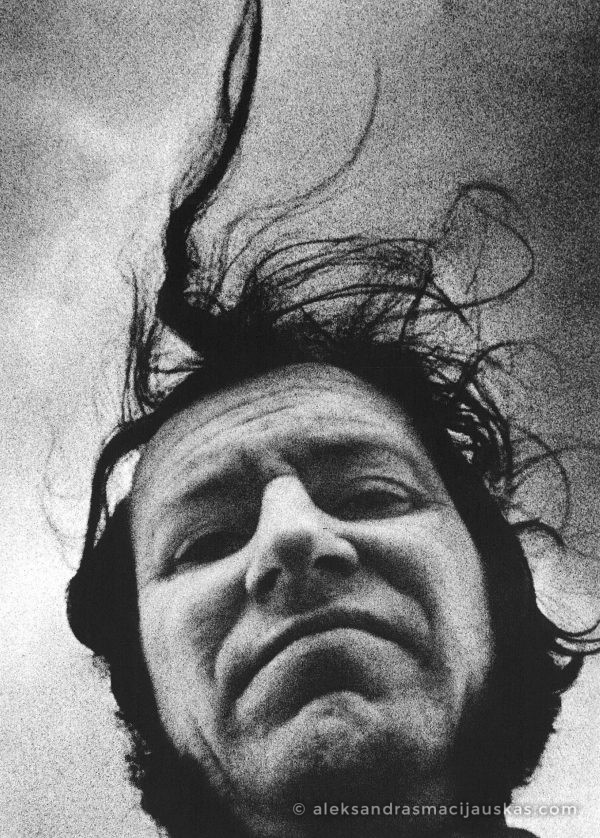
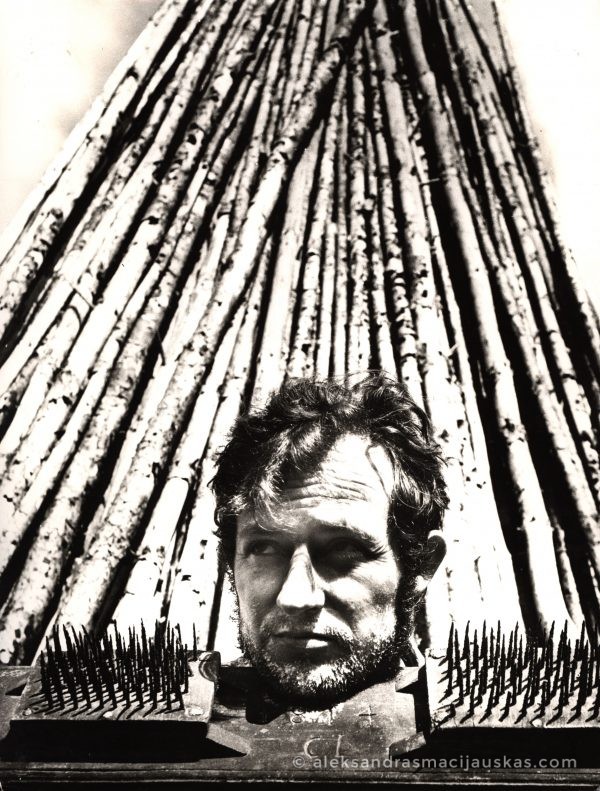
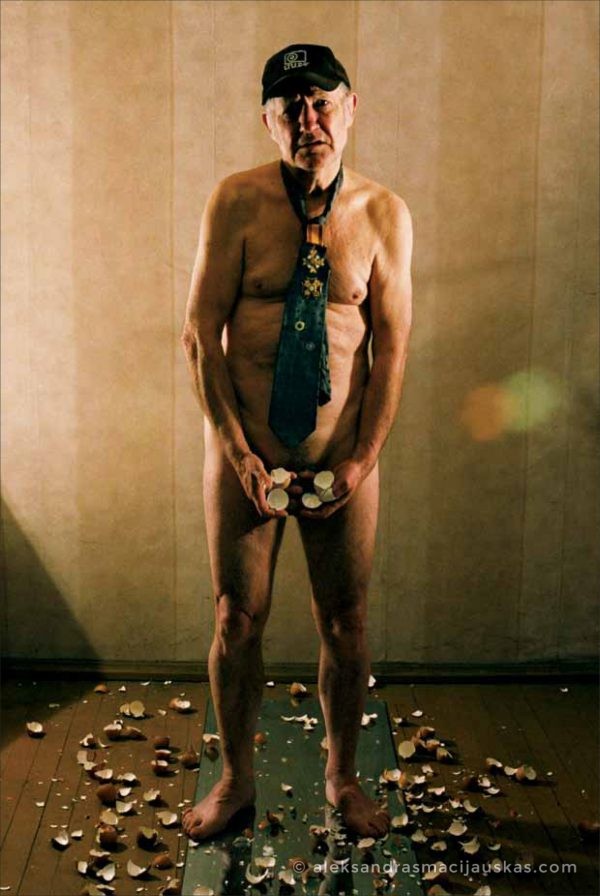
ALEKSANDRAS MACIJAUSKAS has entered the Lithuanian photography together with a group of neoromanticists of the‘sixties, which directed its artistic efforts towards creating a generalized and typified image of a representative of their nation. However, the photographer has soon stepped over the framework of the general conception as it was too idealizing and therefore limited. Thoughtful elderly laces, the poetical sadness of reconciliation and farewell, romantic pictures of the old village and equally idealized townscapes made a repertoire too narrow for A. Macijauskas’ impetuous temper and his rapid intellectual insight. Having decidedly taken his own individual road, he greatly extended the traditional sphere of poetical interpretation. Every household article, beautiful or not, every animal, machine, the peasant, immersed in his rough but healthy life – not in meditation – all that has become the object of concern for his expression.
Thus the “Countryside Market” series, his largest work, born in 1969–1984, stuns a person by its materiality, concreteness, realism and the illusion of chaos.
However, certain recurring structural principles of the image say that documenting national life was not the only intention of the photographer.
The compositional structure, invented by A. Macijauskas at the boundary between the ‘fifties and ‘sixties, when the wide-angler was subject to a wholesale experiment, was unparalleled in its meaningful manner. The wide-angle deformation and the low foreshortening in his“Countryside Markets’”form a peculiar distance from the situation pictured and provoke not only its psychological or sociological, but also a metaphysical apprehension. The enigma of A. Macijauskas’ composition lies also in the possibility it opens for the regrouping of the human, material and animal worlds, extracting the latter from the shade of man’s significance. The curved space in the “Veterinary Clinic” (1977–86) series effectively expresses the atmosphere of sickness and tear. These works reveal the dramatic gift of A. Macijauskas to control the balance between the cruel epics of the situation and the positive image of man.
Vigorous radiating of life in every direction from the locus point; the swarm of things, relations and meanings – this universe of regularity and chance, joy and pain – never possess a destructive spirit in A. Macijauskas’ photographs. This is what holds him strictly within the limits of his generation’s optimistic attitude towards the world. Even his series ”Dying Trees” (1983–85), instead of influencing us by the sadness of the faces of Death, is an attempt to disclose the innate quality of any living substance to display a stubborn resistance to destruction. The apparently animalistic awareness of the Nature’s vital power in the“Markets” series develops into an exposition of the vital powers of the society and the individual, which express themselves either coarsely or finely. It is so also in those infrequent cases when the author shoves the image almost to the verge of the absurd in order to make us understand the value of those things better.
The ability to “concentrate” the matter expressively in the foreground and transcend the image at the same time is one of the most wonderful features of A. Macijauskas’ style and the main prerequisite for his works being so versatile and metaphorical. The confusion of anxiety and holiday, as well as the simple melody of the accordion or the trumpet, is pervaded by phrases of a Sunday symphony, striking the ear from a distance unknown, from beyond the horizon — the low angle projects the commotion of the foreground against the background of serene skies – and, as the result, an empirical, ethnographical picture turns into a stage of life, a mystery. This is what allows the English photography critic Jan Jeffrey to treat the live saleswomen from the Kedainiai or Prienai market as“a presidium established by Fates to look into who knows what weakness of the flesh is”, or to say that “Macijauskas’ marketers also look as though they might have originated in stories or in myths”. The same stylistic property drives the Russian critic V. Dyomin to make a surprised remark that“those reportage photographs are filled with symbolic energy”. Laima Skeivienė. “Literature and Art”, newspaper, Vilnius, 1988
“For Aleksandras Macijauskas photography is not a mirror but a magnifying glass.” Dr. Anri Vartanov. Moscow. “Nemunas” magazine, Kaunas, 1970
“Aleksandras Macijauskas freely uses the most up-to-date means to express the traditional concepts.” Arthur Goldsmith. “Popular Photography.” USA, 1972
“The real avant-gardism is born not in the West – it comes from the East and is only “the mewing” compared to that strength, unconventionality, and courage, when Macijauskas in rubber boots covered with dung enters the market square and leaves it carrying a basket full of photos.” Jean Claude Lemagny. Arles Photography Festival in 1975
“Maybe there were only two Lithuanians-rebels – Aleksandras Macijauskas and Vitas Luckus – who constantly questioned the usual interpretation of photography. Later the young photographers also rose in rebellion, however, Aleksandras Macijauskas and Vitas Luckus were restless by nature.” Photography and cinema critic Skirmantas Valiulis. “7 Days of Art”, Vilnius, 1977
“Humanism in dung and blood”. Victor Diomin. Moscow. From the lecture in Nida seminar about Aleksandras Macijauskas’ “Veterinary Clinics” series, 1978
“In Lithuanian photography Aleksandras Macijauskas usually gives us a shock.” Writer Lev Aninski. “Articles on Lithuanian photography”, Moscow, 1984
“In Aleksandras Macijauskas’ works antibeauty becomes that what sets a riddle of existence and makes us become thoughtful about life and death.” Algirdas Gaižutis. “Literatūra and menas”, newspaper, Vilnius, 1993
“Aleksandras Macijauskas as Kristijonas Donelaitis felt the authentic pulse of his nation in a place where the others did not think of feeling it.” Algimantas Kezys. Aleksandras Macijauskas’ “My Lithuania”. “Draugas” newspaper, Chicago, 1995
“I do not know any other artist in Lithuanian photography who lays bare the phenomena of life like that. Even those who take photos of naked men and women do not succeed in laying bare the body and spirit in such a way as Aleksandras Macijauskas who takes photos of dressed veterinary surgeons or market people.” Poet Alis Balbierius. “Literatūra and menas”, newspaper, Vilnius, 1997
“Aleksandras Macijauskas creates his photos from small parts of everyday reality. Interactions in his photos become portrait symbols that freely and easily speak about life. Such means of expression is deeply-rooted in the history of art beginning with “Gernica” by Picasso and ending with details from Goya’s life.” Steve Yates. Museum of New Mexico, 2001
“The power of Aleksandras Macijauskas’photos is in his skill to strengthen our recognition through the most usual emotions. They cause great anxiety that rouses our hidden fear.” Curator of exhibition Van Dere Coke. Museum of New Mexico, 2001
“Aleksandras Macijauskas who already in 1964 started to take photos is one of our most controversal creators, the embodiment of “destabilizing” temperament able to focus on real and virtual reality and to embrace everything – beginning with reportage and ending with grotesque.” Photoartist, historian Stanislovas Žvirgždas. “Month of photography” Bratislava, Slovakia, 2005
Objective sight according to Macijauskas is not the easy catching of the surface, not the passive stopping of a real moment but the intuitive catching of the beginning of an action and the transformation of the future into the present time. Margarita Matulytė. For and Against “The Last Book”. [re:] fotografija,No 2 (15), Vilnius, 20
A. Macijauskas: mums reikia ir proto, ir kumščių, ir širdies 2017-07-09 20:00:00 Jūratė Kuzmickaitė
„Prospekto Galerijoje“ – A.Macijausko paroda „NEGRAŽI FOTOGRAFIJA Vasario 4 d. 2014
Aleksandras Macijauskas „NUOBODULYS YRA NUSIKALTIMAS!“ Liepos 26 d. 2011 Vidmantas Kiaušas
Skirmantas Valiulis RATAS Birželio 11 d. 2010
Jonas Kaunietis AR GALIMA PASTATYTI PAMINKLĄ DVASINGUMUI? Gruodžio 28 d. 2011
Skirmantas Valiulis Kelias į tylą Septynios meno dienos2006-09-01 nr. 720
FOTOMENININKAI – APIE KŪRYBOS DRĄSĄ IR BAIMĘ Spalio 13 d., 2005 Užrašė Dovilė ZELČIŪTĖ
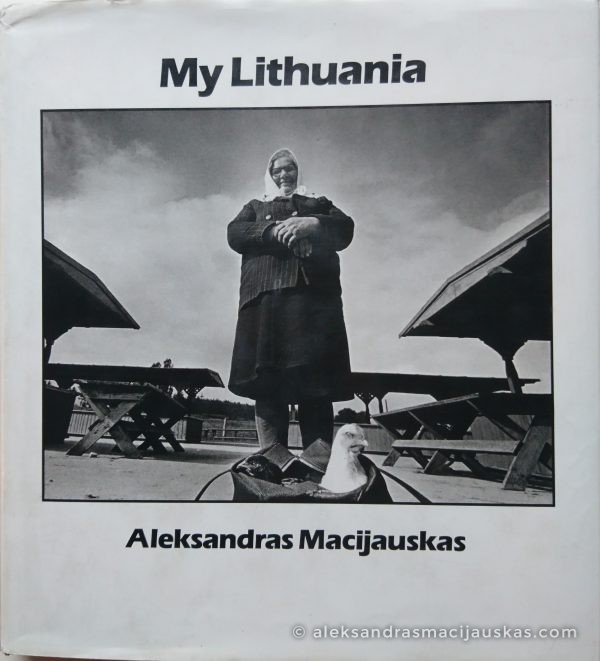
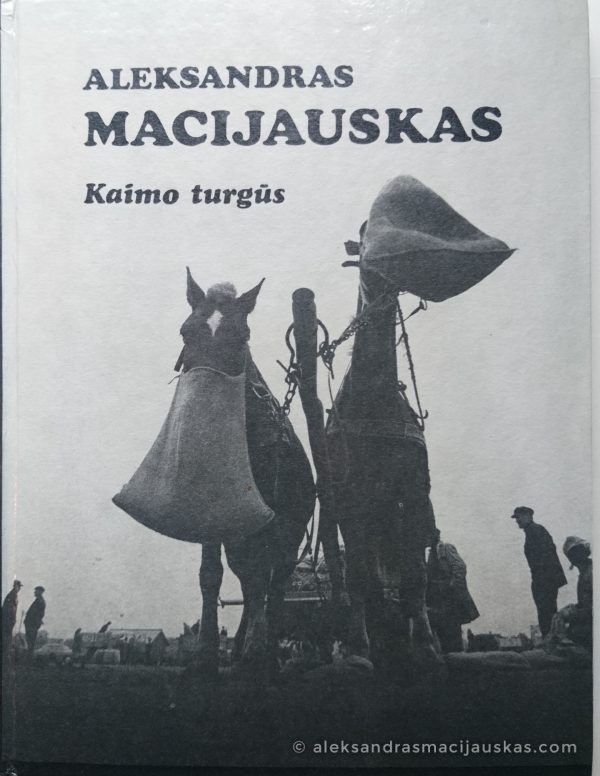
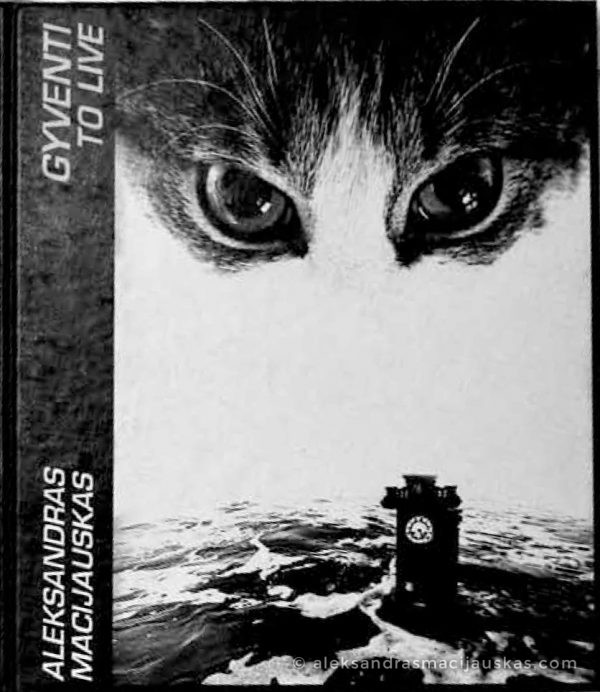
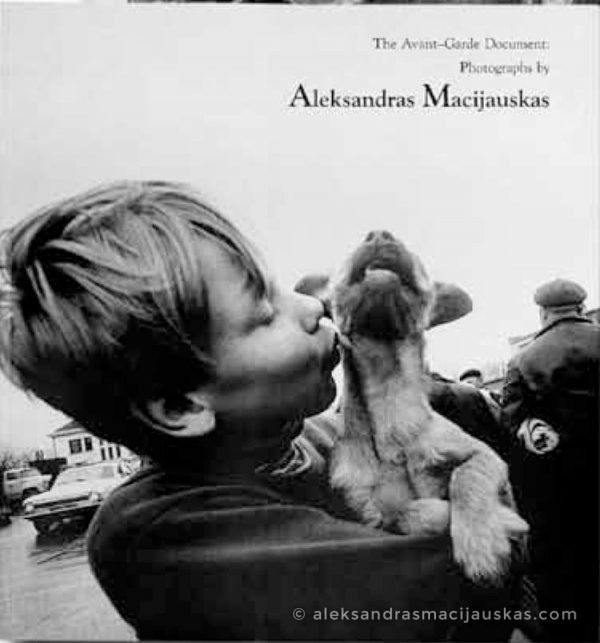
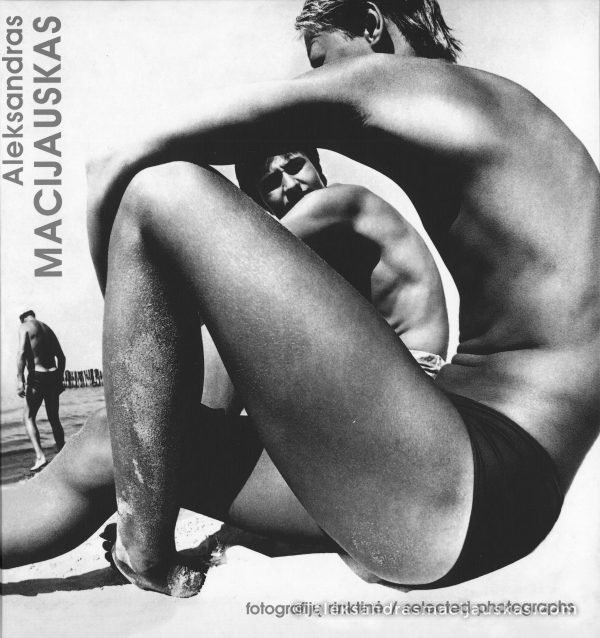
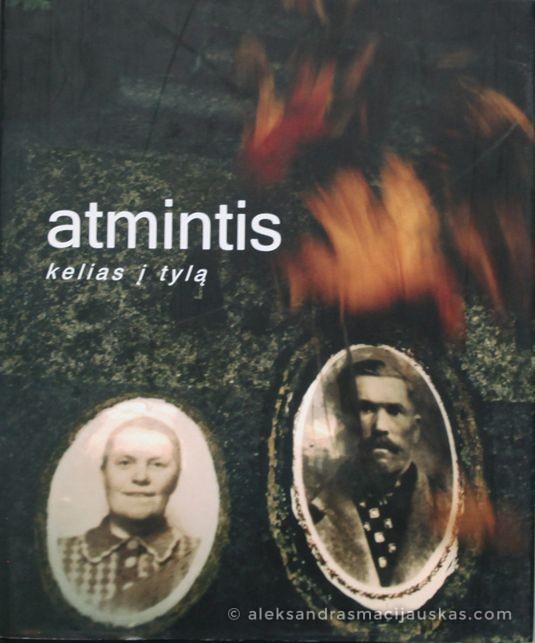
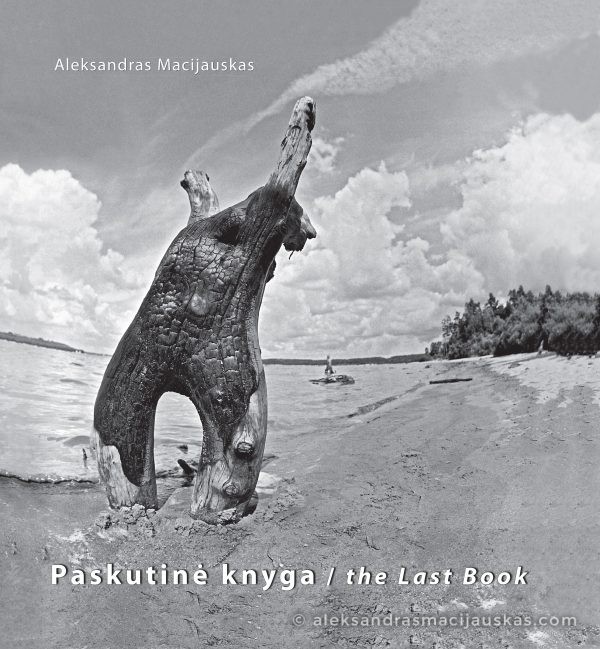
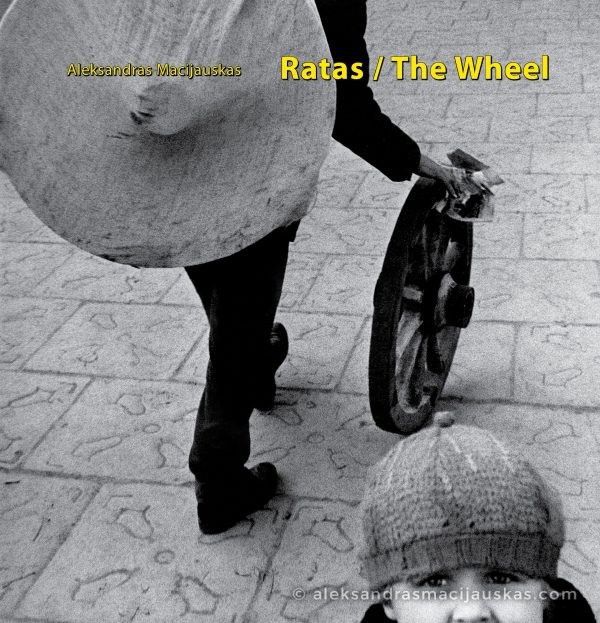
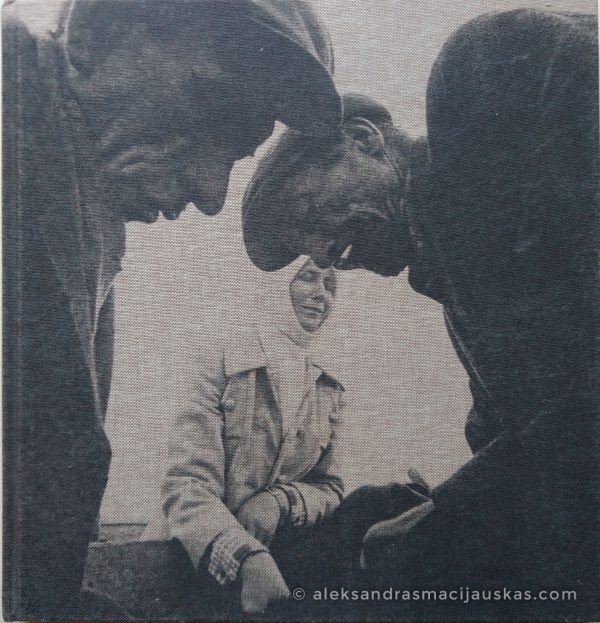
Edmundas Kolevaitis. TANGO: [fotoalbumas] / sud. A.Macijauskas. Kaunas, VŠĮ “Senamiesčio Klubas”: 2019. 285p. Gretut.tekstas liet., anglų k.
Edmundas Kolevaitis. PANGEA 2: [fotoalbumas] / sud. A.Macijauskas. Kaunas, VŠĮ “Senamiesčio Klubas”: 2018. 299 p. Gretut.tekstas liet., anglų k.
Raimondas Puišys. ВОРКУТА 67 ПАРАРЕЛЬ: [fotoalbumas] / sud. A.Macijauskas. Kaunas, 2016. 264 p. Gretut.tekstas liet., anglų k.
Raimondas Puišys. AUKŠTUMOS ŽEMUMOS: [fotoalbumas] / sud. A.Macijauskas. Kaunas, 2012. 176 p. Gretut.tekstas liet., anglų k.
Edmundas Kolevaitis. PANGEA: [fotoalbumas] / sud. A.Macijauskas. Kaunas, VŠĮ “Senamiesčio Klubas”: 2012. 270 p. Gretut.tekstas liet., anglų k.
Romualdas Augūnas. Sapnuoju Lietuvą: [fotoalbumas] / sud. A. Macijauskas. Vilnius, Nacionalinis fotografijos meno fondas: 2010. 216 p. Gretut.tekstas liet., anglų k.
Tochiki Ozawa. Kelionės į pastelines spalvas 4. Australija iš arti: [fotoalbumas] / sud. A. Macijauskas. Kaunas: Lietuvos fotomenininkų sąjunga, Kauno skyrius. 2009. 88 p. Gretut.tekstas liet., anglų k.
Tochiki Ozawa. Kelionės į pastelines spalvas 3. Akmens kultūros šalis Turkija: [fotoalbumas] / sud. A. Macijauskas. Kaunas: Lietuvos fotomenininkų sąjunga, Kauno skyrius. 2008. 76 p. Gretut.tekstas liet., anglų k.
Tochiki Ozawa. Kelionės į pastelines spalvas 2. Užburianti Lietuva: [fotoalbumas] / sud. A. Macijauskas. Kaunas: Lietuvos fotomenininkų sąjunga, Kauno skyrius. 2007. 84 p. Gretut.tekstas liet., anglų k.
Tochiki Ozawa. Pastelinių spalvų kelionės: [fotoalbumas] / sud. A. Macijauskas. Kaunas: Lietuvos fotomenininkų sąjunga, Kauno skyrius. 2006, 84 p. Gretut.tekstas liet., anglų k.
Tochiki Ozawa. Etude nude: [fotoalbumas] / sud. A. Macijauskas. Kaunas: Lietuvos fotomenininkų sąjunga, Kauno skyrius, 2006. 80 p. Gretut.tekstas liet., anglų, rusų k.
Romualdas Augūnas. Žmonės kalnuose: [fotoalbumas] / sud. A. Macijauskas. Vilnius: Lietuvos fotomenininkų sąjunga, 2002. 204 p. Gretut.tekstas liet., anglų, rusų k.
Jonas Strazdauskas. Mažeikių kraštas: [fotoalbumas] / sud. A. Macijauskas. Mažeikiai: Mažeikių rajono kultūros rėmimo fondas, 1999, 160 p. Gretut.tekstas liet., anglų k, rusų k.
Buračas: [fotoalbumas] / sud. A. Macijauskas. Vilnius: Baltos lankos 1998, 168 p. Gretut.tekstas liet., anglų k.
Romualdas Augūnas. Tas didelis mažas pasaulis: [fotoalbumas] / sud. A. Macijauskas. Kaunas: Kauno meno fondas, 1998. 216 p. Gretut.tekstas liet., anglų, rusų k. Balys
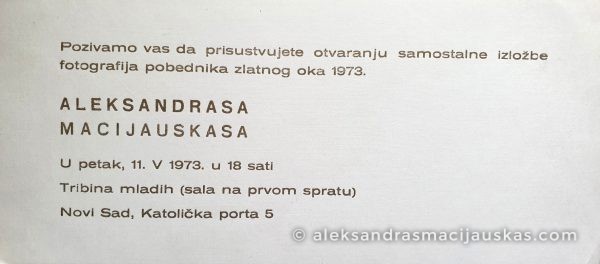
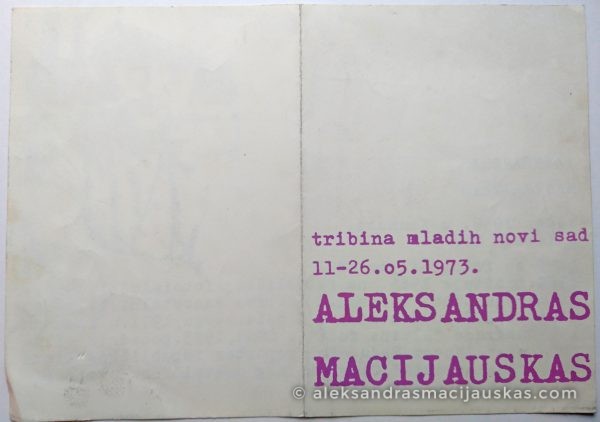
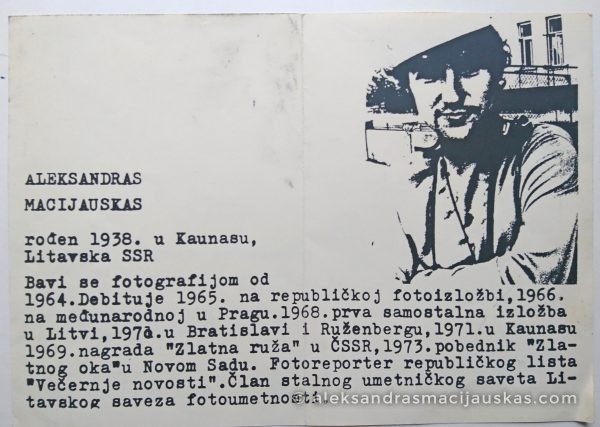
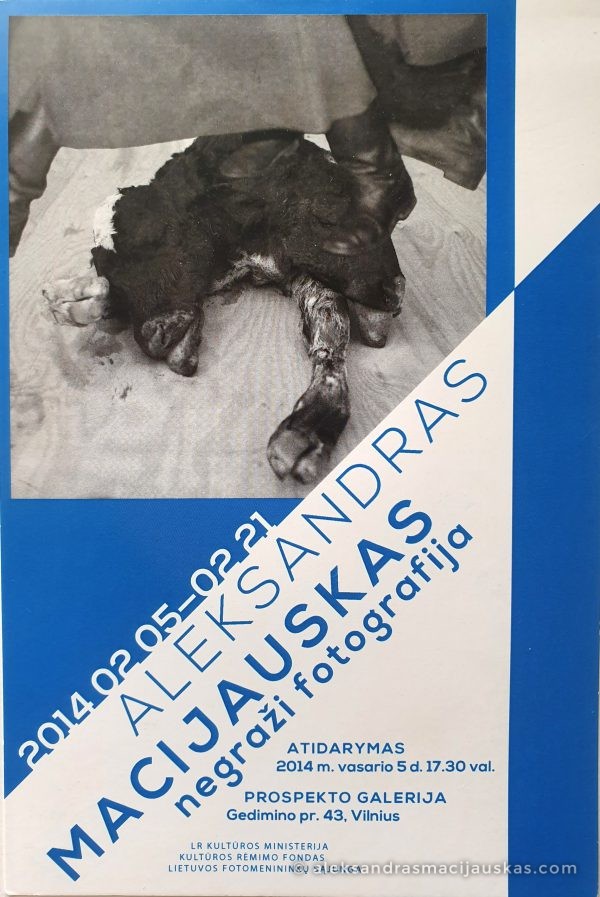
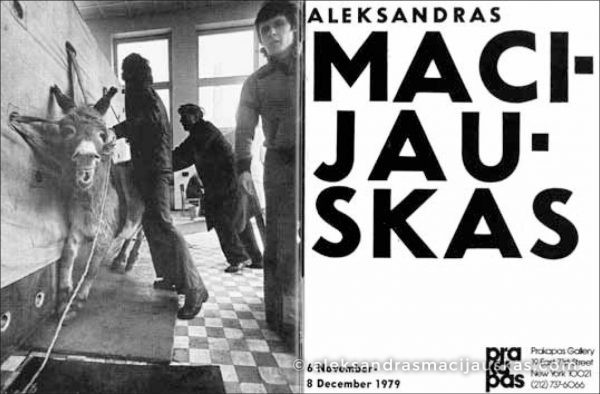
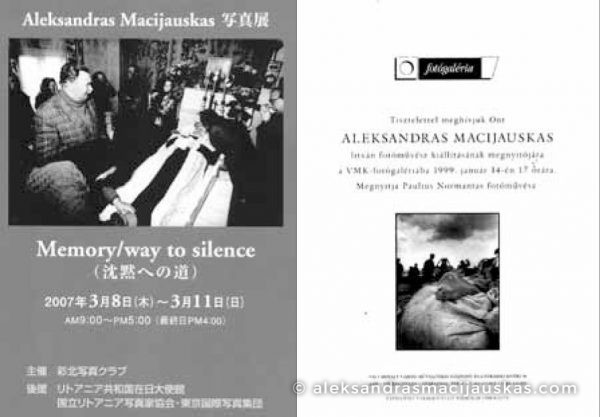
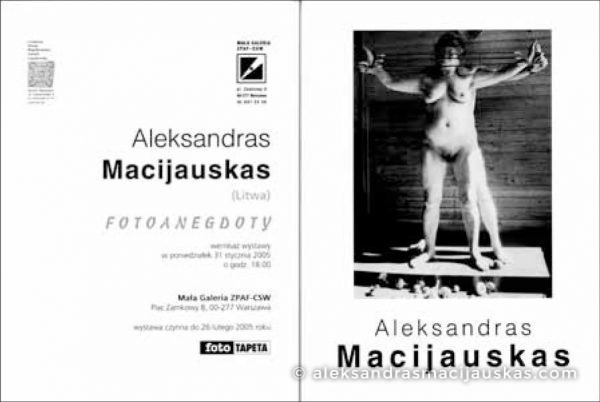
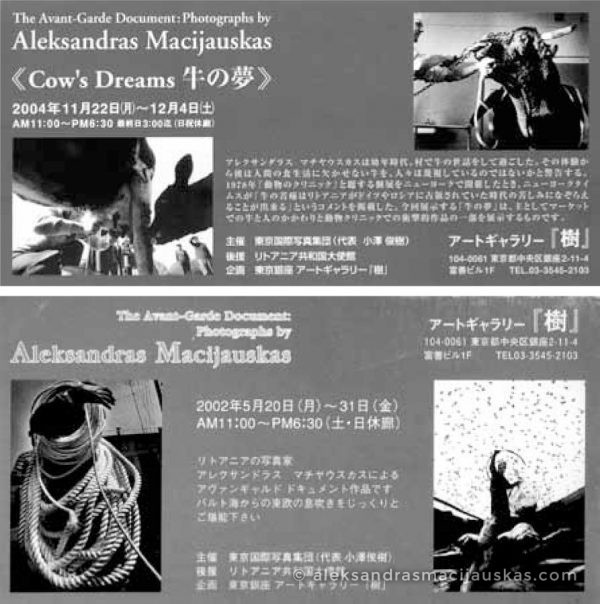
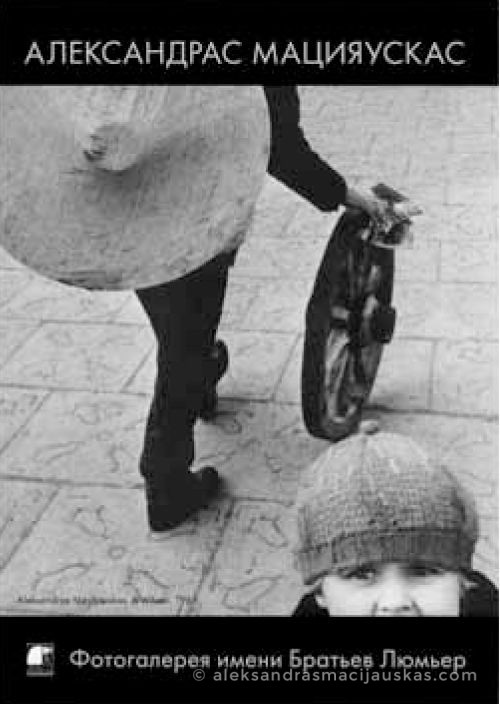

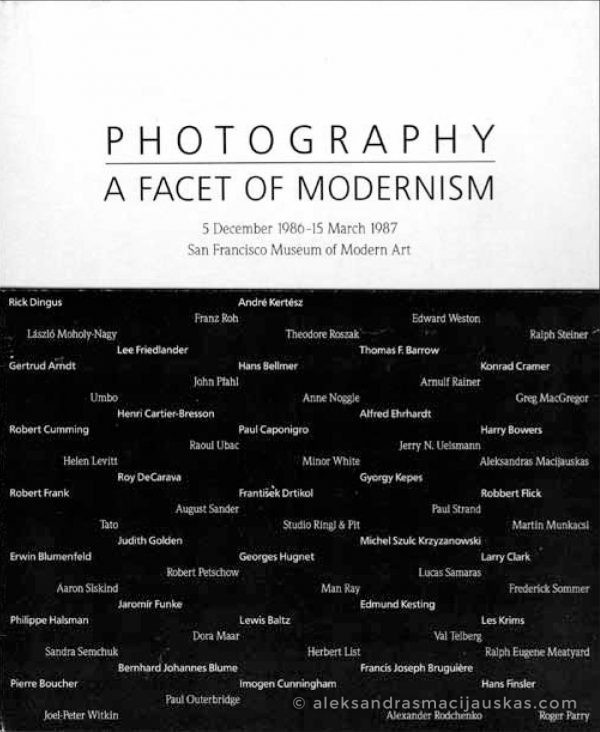
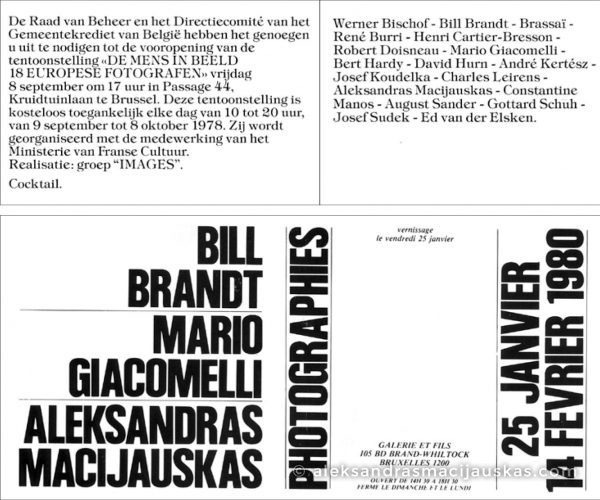
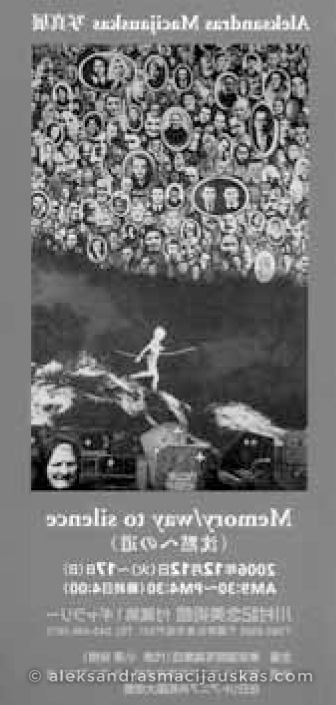
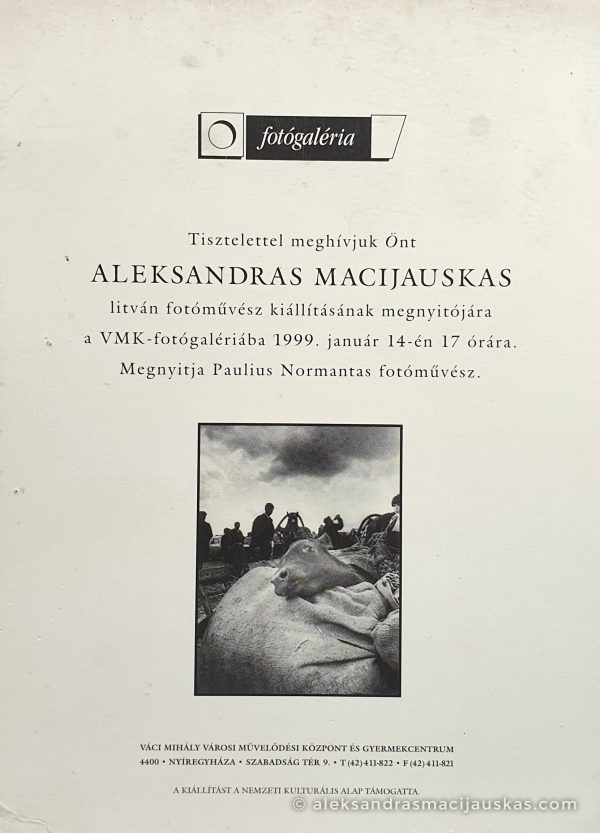
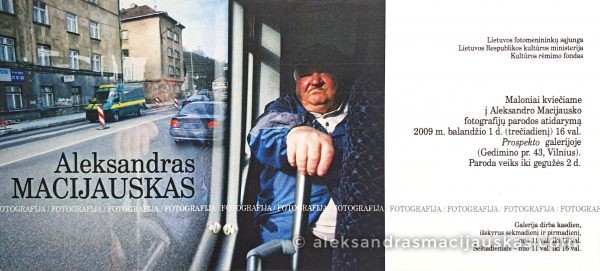
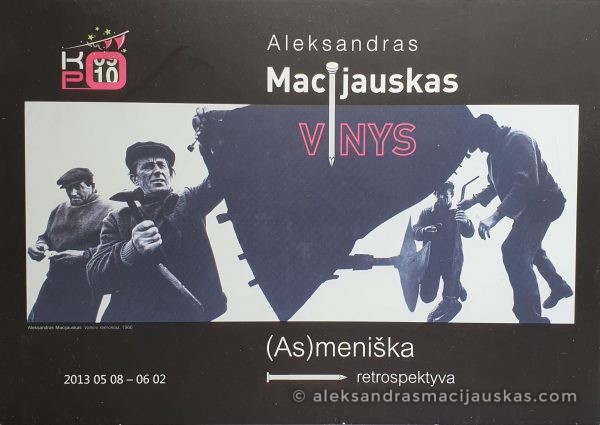
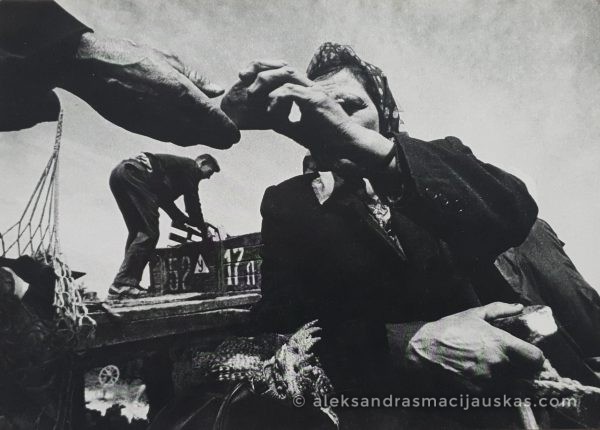
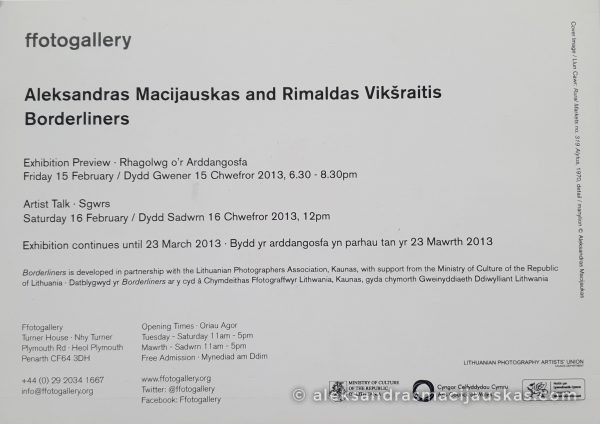
Museum of Photography, Šiauliai, Lithuania
San Francisco Museum of Modern Art, USA
Museum of New Mexico, Museum of Fine Arts, Santa Fe, USA
Bibliotheque Nationale, Paris, France Musee Reattu, Arles, France
Musee Francais de la Photographie, Bievres, France
International Centre of Photography, New York, USA
Modern Art Museum, Stockholm, Sweden
Museu internacional de fotografia. Catalunya, Spain
FIAP Collection, Lozano, Switzerland
Victoria and Albert Museum, London.
Metropolitan Museum of Art, New York, USA.
National Gallery of Art, Washington DC, USA.
The Lumiere brothers Center for Photography, Moscow, Russia
Fondazione Modena Arti Visive – Galleria Civica, Italy
ACKLAND ART MUSEUM The University of North Carolina at Chapel Hill
1968 Čiurlionis Museum, Kaunas, Lithuania
1969 Union of Journalists, Moscow, USSR
1970 House of Print Trades Workers, Riga, Latvia
1970 Retrospective, Malaya Galeria, Bratislava, Czechoslovakia
1970 Art Museum, Ruzhomberok, Czechoslovakia
1970 National Library, Paris, France
1971 House of Culture, Šiauliai, Lithuania
1971 People’s Ethnographical Museum, Leningrad, USSR
1974 Tribina Maldih, Novy Sad, Yugoslavia (retrospective)
1974 National Library, Paris, France
1974 Gallery of Association of Lithuanian Photographers, Vilnius, Lithuania
1975 Hotel de Ville, Arles, France “Village Markets“
1976 Retrospective, Gallery of Photography, Warsaw, Poland
1976 Retrospective, Gallery of Photography, Krakow, Poland
1977 Retrospective, House of Culture, Brno, Czechoslovakia
1977 Musse Reattu, Arles, France “Lithuanian Village Markets“
1977 Photoclub A.P.27, Brussels, Belgium “Lithuanian Village Markets“
1979 Museum of Photography, Šiauliai, Lithuania “TheVeterinary Clinics“
1979 Retrospective, Gallery of Fils, Brussels, Belgium
1979 Retrospective, Art Criticism Institute, Moscow, USSR
1979 Retrospective, House of Culture, Kishinnev, Moldavian SSR
1979 Retrospective, House of Culture, Tiraspol, Moldavian SSR
1979 Prakapas Gallery, New York, USA “The Veterinary Clinics“
1980 Retrospective, Photo Gallery, Kaunas, Lithuania
1980 Retrospective, House of Culture, Burgas, Bulgaria
1980 SNO Library, New York, USA “Lithuanian Village Markets“
1981 Retrospective, Babylon Cinema, Berlin, Germany
1982 Retrospective, Photo Gallery, Bratislava, Czechoslovakia, traveling exhibition to Pribor, Usti nad Laben, Most and Banska Bystrica
1984 Valokuva Galleria, Finnfoto, Helsinki, Finland
1984 Photo Gallery, Kaunas, Lithuania “Fotoprints on the bank”
1984 Museum of Photography, Šiauliai, Lithuania Retrospective, R.I.P., Arles, France
1985 Retrospective, Joensuu Art Museum. Joensuu. Finland.
1985 Retrospective, Pohotographic Gallery “Rantagalleria”. Oulu. Finland.
1986 Chateau d‘Eau Municipal Gallery, Toulouse France (retrospective)galeriechateaudeau.org
1986 Retrospective, Exhibition House, Vitebsk, Belarussia
1987 Retrospective, Institute of Russian Language, Moscow, USSR
1987 Retrospective, Culture Centre for Youth, Leningrad, USSR
1987 Retrospective, Art Exhibition Palace, Sofia, Bulgaria
1988 Retrospective, Photo Gallery, Kaunas, Lithuania
1988 Retrospective, Museum of Photography, Šiauliai, Lithuania
1988 Retrospective, Art Exhibition Palace, Vilnius, Lithuania
1988 Retrospective, House of Architects, Lvov, Ukraine
1988 Retrospective, Photography Museum, Lvove, Ukraine
1991 Retrospective, History Museum, Montpellier, France
1991 Portfolio Gallery, London, Great Britain “My Lithuania“
1992 Photo Gallery, Kaunas, Lithuania “This Wild and Small World“
1992 Photo Gallery, Vilnius, Lithuania “This Wild and Small World“
1993 Retrospective, Gallery “Les Chiroux“, Liege, Belgium
1993 Photo Gallery, Vilnius, Lithuania “Memory“
1993 Photo Gallery, Klaipėda, Lithuania “Lithuanian Village Markets“
1994 Fujifilm Photo Gallery, Kaunas, Lithuania „Memory“
1994 Museum of Lithuanian Art, Lemont, Illinois, USA “Lithuanian Village Markets“
1994 Lithuanian Art Museum, Chicago, USA “Lithuanian Village Markets“
1994 Palais des Congres et de la Culture, Le Mans, France “The Veterinary Clinic“
1995 Museum of Photography, Šiauliai, Lithuania “Memory“
1995 Galerie Im Pferdestall, Galerie “Alte Schosserei“, Berlin, Germany “Tod und Ritual“
1995 Museum of Photography, Šiauliai, Lithuania (retrospective)
1995 Fujifilm Photo Gallery, Kaunas, Lithuania “Memory“
1995 Retrospective, Photo Gallery, Nyiregyhaza, Hungary
2001 Museum of New Mexico, Museum of Fine Arts, Santa Fe, USA “The Avant-Garde Document: Photographs by Alexandras Macijauskas“
2002 Art Gallery KI, Tokyo, Japan “The Avant-Garde Document: Photographs by Aleksandras Macijauskas“
2004 “Cow’s Dream“. Art Gallery KI, Tokyo. Japan
2004 Photography Gallery Prospektas, Vilnius, Lithuania “Memory“
2005 Giedre Bartelt Galerie. Berlin, Germany “Aleksandras Macijauskas: One man-show“
2005 Gallerie Opera, Divadlo Iribo Myxona, Ostrava “Aleksandras Macijauskas: Život je krásny”
2005 Mala Galeria ZPAF – CSW, Warszawa “Photoanecdotes“
2005 Stara Galeria ZPAF. Warszawa. Retrospective
2005 Month Of Photography. Dom umenia. Bratislava, Slovakia. Retrospective.
2006 Museum of Photography, Šiauliai, Lithuania. “Cow’s Dream“
2006 Kawamura Memorial Museum of Art. Japan “Memory. Way to Silence”
2007 At Pastoral Kazo (Kazo City Hall), Kazo-shi, Saitama-ken, Japan “Memory. Way to Silence”
2007 Moscow House of Photography. Gallery “Glaz”
2007 Foto Art Festival. Bielsko-Biala Poland
2007 Taiwan. Pethany Larsen Gallery
2008 Sankt Peterburg, Russia. Exhibition series “World Stars. A. Macijauskas”. Rachmaninow Yard Gallery
2008 Fujifilm Gallery, Kaunas, Lithuania „Kaunas The Bus Window”
2009 Aleksandras Macijauskas. Prospekto Gallery, Vilnius, Lithuania.
2009 The Lumiere Brothers photogallery, Moscow, Russia.
2010 National Gallery of Lithuany, Vilnius, Lithuania „Demonstrations in Kaunas”
2014 Prospekto Gallery, Vilnius, Lithuania “Ugly photography “
2020 Museum Mažeikiai, Mažeikiai, Lithuania Aleksandras Macijauskas “Žemaitijos turguose”
1969 9 ФОТОГРАФОФ ЛИТВЫ. Central House of Journalists Moscow, Russia
1969 Winner of the International Exhibition, Czechoslovakia PHOTO FORUM, GRAN PRIX golden rose
1973 Four Contemporary Photographers of Lithuania, Aleksandras Macijauskas, Algimantas Pilvelis, Romualdas Rakauskas, Antanas Sutkus, The Photographers’ Gallery LTD, London
1973 Winner of the main prize ‘zlatno oko/brazde’ at the International Exhibition in Yugoslavia,
1974 Photographers’ Gallery, London, GB. –„Four Lithuanian Photographers“.
1979 Canon Photo Gallery, Amsterdam, the Netherlands. –„Lithuanian Photography“.
1979 Galerie et fils. Bruxelles. “Images des Hommes”
1979 Exhibition of Aleksandras Macijauskas and Antanas Sutkus, Prakapas Gallery, Niujorkas
1979 FNAC Montparnasse Gallery, Paris, France
1979 Venezia’79, Contemporary European Photography, John Batho, Aleksandras Macijauskas, Michel Szulc Krzynowsky, Italy, Venezija
1980 Photographers’ Gallery, London,GB.–„Lithuanian Photography“.
1980 Galerie et fils. Bruxelles. – Photographies Bill Brandt, Mario Giacomelli, Aleksandras Macijauskas.
1984 Benteler Galleries, Houston, Texas, USA. – “Contemporary European Photography.”
1985 Photography center, Stokholm, Sweden.
1985 Museum of Modern Art, San Francisko /USA
1986 San Francisco Museum of Modern Art. “Photography: A Facet of Modernism.”
1986 Centre Nationaille de la Photographie, Paris, France.
1987 Museum of Modern Art, San Francisko, USA. „Facets of Modernism“.
1987 Museum of Modern Art, Oxford, Great Britain
1987 UNESCO headquarters, Paris, France.
1987 A. Pushkin Institute of Russian Language, Moscow, Russia
1987 Exhibition hall, Trnava, Czechoslovakia
1987 Society of Photography, Copenhagen, Denmark
1987 Museum of Photography, Helsinki, Finland
1988 General San Martin photography gallery, Buenos Aires, Argentina
1988 Photography Gallery, Heb, Czechoslovakia
1988 Photography exhibition by Aleksandras Macijauskas and Antanas Sutkus, Gallery „Comptoir de la photographie“, Paris
1990 L’Anne de l’Est. Muse d’ Elyse, Lozana, Šveicarija
1990 Photography Festival, Arles, Frans
1990 Memory and intuition. Contemporary Lithuanian photography. Art Museum, Lodz, Poland
1991 Museum of Photography, Helsinki, Finland
1992 Aspects of photography. IFA Gallery, Berlin, Germany
1993–1994 Picture memory. Baltic photography today („Das Gedächtnis der Bilder“), Stadtgalerie im Sophienhof, Kiel; Rostock Exhibition Hall, Germany; Latvian Exhibition Hall, Riga; Center for Contemporary Art, Vilnius; Berlin Gallery Martin Gropius Bau; State Academy of Arts, Gdansk, Poland; Nikolaj Exhibition Hall, Copenhagen, Denmark;
1994 Gallery Obalne, Piran, Slovenia;
1995 Bread and salt. Edinburgh College of Art, Edinburgh, UK
1995 Vitality and changes in Lithuanian photography. Gahlberg Gallery, Chicago, USA
1995 VII Nordic Film Festival, Rouen, France
1996 Bread and salt. Cornerhouse Gallery, Manchester, UK
1996 Acts of Lithuanian photographers are prohibited. Munich, Germany
1997 Photo exhibition from the FIAP collection, International Slideshow Festival, Ambérieu en Bugey, France
1997 Ancien Carmel, Tarbes, France
1997 Gallery Loža Koper, Mestna Galerija Ljublana, Slovenia. Aleksandras Macijauskas, Antanas Sutkus.
1998 FUJIFILM photography gallery, Kaunas, Lithuania.„Three plus One“ together with Aleksandras Macijauskas, Romualdas Rakauskas, Romualdas Požerskis. Nude.
1999 Contemporary Lithuanian photography. Eastern European Photography Month. House of Culture, Bratislava, Slovakia
1999 Galery of Shinjuku, Tokyo, Japan
1999 Contemporary Lithuanian photography. Joseph Sudek House of Photography, Prague, Czech Republic
2001 How do you live, man? Photography Gallery Prospektas, Vilnius
2002 Photography Festival, Tokyo, Japan
2002 Lithuanian insights: photography since 1960. up to now. Leinwandhaus Gallery, Frankfurt am Main, Germany
2003 „Das Baltische Fotolinse“, Schloss Holligen, Bern, Switzerland
2003 Photo-eye Gallery, Santa Fe, New Mexico. USA.
2004 Exhibition of Alexander Macijauskas, Antanas Sutkus, Vito Luckus and Romas Juškelis Beyond Memory: Non-conformist photographs from the Soviet Union exhibition from the collection of Norton and Nancy Dodge, Jane Voorhees Zimmerli Art Museum, New Brunswick, Canada
2005 Galery Lichtblick. Koln. Germany.Aleksandras Macijauskas, Antanas Sutkus, Artūras Valiauga.
2005 Galerie Opera, Divaldo Jifiho Myrona, Aleksandras Macijauskas (Život je krasny) Romualdas Požerskis (Zahrady vzpominek) Ostrava, Czechoslovakia
2005 Museum Folkwang, Essen, Germany.
2006 On the way to the 21st century, Hans Christian Andersen Museum, Festival. Aleksandras Macijauskas, Antanas Sutkus, Romualdas Požerskis. Rome, Italy.
2008 Rietavas Oginskis Museum. Rietavas, Lithuania
2009 National Art Gallery. Vilnius, Lithuania
2013 Photogallery Aleksandras Macijauskas and Rimaldas Vikšraitis Borderliners, Penarth LTD
2018 The passage of daily life. Photography exhibition. Moo museum, Vilnius, Lithuania
2019 Panevėžys International Photography Biennial “Man and the City 2019” Panevežys and Alytus, Lithuania.
A WORLD HISTORY OF PHOTOGRAPHY / 546 THE STRAIGHT IMAGE 706. ALEKSANDRAS MACIJAUSKAS. In the Veterinary Clinic, 1977. Gelatin silver print. Print collrctions. Aleksandras Macijauskas
PHOTOGRAPHY A FACET OF MODERNISM / PHOTOGRAPHS FRPM THE SAN FRANCISCO MUSEUM OF MODERN ART VAN DERN COKE WITH DIANA C. DU POINT, HUDSON HILLS PRESS NEW YORK / 138 – 139 pages / ALEKSANDRAS MACIJAUSKAS 1977 from the series In the Veterinary Clinic
HISTOIRE DE LA Photrography, Bordas, Paris, 1987/ Legmany, Jean-Claude and Roulle
Photographie tome2 photographie acquisitions 1976 – 1980 / Copyring 1981 Bruxelles/ 150 – 153 pages / ALEKSANDRAS MACIJAUSKAS “In the market”
WHAT IS PHOTOGRAPHY 150 Yers of photography Praha 1989 / 256, 340 pages / ALEKSANDRAS MACIJAUSKAS 1968 – 78 From The Village Markets
PHOTOGRAPHERS ENCYCLOPEADIA INTERNATIONAL 1839 to the present / Copyring 1985 Michele + Michel Auer Editions Camera Obscura CM-1248 Hermance, Geneve/ ALEKSANDRAS MACIJAUSKAS “Wheel 1967”
2 INFORMATORIUM PRO KAŽDEHO / ANES MODERNI VŠEVEO LITERATURA / DIVADEO / FILM / FOTOGRAFIE @ Mlado fronta, 1984 Photography @ Mlada fronta 1984
MASTERS OF PHOTOGRAPHY A THEMATIC HISTORY / First published in the USA 1987 Text by Daniela Mrazkova / 171, 181, 183 – 185 pages / ALEKSANDRAS MACIJAUSKAS 1968 – 78 from the cycle Village Markets
Images des Homes photographes europees / Compose en Tiffany par Graphiservice, Bruxeles/Acheve d’imprimer en juin 1979 / 90 – 95 pages / ALEKSANDRAS MACIJAUSKAS 1968 – 78 in the Market
Contemporary Photographers / @ MACMILLAN PUBLISHERS (JURNALS DIVISION)LIMITED, 1982 / 469, 470 pages / ALEKSANDRAS MACIJAUSKAS In the Veterinary Clinic, 1977
Contemporary Photographers THIRD EDITION / St. James Press An International Thomson Publishing Company, 1995 / 689 – 691 pages / ALEKSANDRAS MACIJAUSKAS Series Memory, 1993
Photography Venezia’79 / Printered in Italy / 188, 382 – 384, 390 pages / ALEKSANDRAS MACIJAUSKAS “Woman with pig”
HISTORIES D’OEUFS / 1999 Editions Ideas et Calendes SA Imprime en Suisse / 22, 26, 27, 43, 75, 124 – 127 pages / ALEKSANDRAS MACIJAUSKAS “In the Market”, “Photo anecdotes”
BODY VISION Lituanian nudes / ANNETTE NELLESSEN AND MATTHIAS REUSS 1996 / 71 – 83 pages / ALEKSANDRAS MACIJAUSKAS “Photo anecdotes”
Photography Year Book 1972 / Published by FOUNTAIN PRESS, England / 85 pages / ALEKSANDRAS MACIJAUSKAS “Forester”
Photography Year Book 1974 / Published by FOUNTAIN PRESS, England / 175 – 176 pages / ALEKSANDRAS MACIJAUSKAS “Portrait”
Photography Year Book 1978 / Published by FOUNTAIN PRESS, England / 185 pages / ALEKSANDRAS MACIJAUSKAS “Memory”
Photography Year Book 1993 / Published by FOUNTAIN PRESS LTD, England / 100, 101, 136 pages / ALEKSANDRAS MACIJAUSKAS “Veterinary Clinic”, “Korida”
dumont foto 1 / Fotokunst und Fotodesign international 1978 Du Mont Buchverlag. Koln, Germany / 176 pages / ALEKSANDRAS MACIJAUSKAS “In the Market”
dumont foto 2 / Fotokunst und Fotodesign international 1980 Du Mont Buchverlag. Koln, Germany / 63 – 65 pages / ALEKSANDRAS MACIJAUSKAS “Veterinary Clinic”
FOTOGRAFEN aus der UdSSR / Presse Informations Agentur Gesellcshaft m.b.H (PIAG) Baden-Baden 1, 1982 / 73 – 76 pages / ALEKSANDRAS MACIJAUSKAS “In the Market”
Fotojahrbuch international 1970/71 / Leipzig: VEB Fotokinoverlog / 140 pages / ALEKSANDRAS MACIJAUSKAS “Die Kanone”
Fotojahrbuch international 1972 / Leipzig: VEB Fotokinoverlog / 144 pages / ALEKSANDRAS MACIJAUSKAS “Einsamkeit”
Fotojahrbuch international 1973 / Leipzig: VEB Fotokinoverlog / 80, 97, 107 pages / ALEKSANDRAS MACIJAUSKAS “Prachtexemlar”, “Vor des Demonstration”
Fotojahrbuch international 1974 / Leipzig: VEB Fotokinoverlog / 93, 94, 137 pages / ALEKSANDRAS MACIJAUSKAS “In der Moskouer Metro”, “Schift sreparator”, “Aus dem Market”
Fotojahrbuch international 1975 / Leipzig: VEB Fotokinoverlog / 137, 164-165 pages / ALEKSANDRAS MACIJAUSKAS “Sprung”, “”
Fotojahrbuch international 1976 / Leipzig: VEB Fotokinoverlog / 160 pages / ALEKSANDRAS MACIJAUSKAS “Indian summer”
Fotojahrbuch international 1978 / Leipzig: VEB Fotokinoverlog / 57 – 61 pages / ALEKSANDRAS MACIJAUSKAS “Aus dem Market”
Fotojahrbuch international 1980/81 / Leipzig: VEB Fotokinoverlog / 73 pages / ALEKSANDRAS MACIJAUSKAS “Sommer”
Fotojahrbuch international 1982 / Leipzig: VEB Fotokinoverlog / 104, 168 – 171 pages / ALEKSANDRAS MACIJAUSKAS “Schiftbauer”, “In der Tierklinik”
Another Rusia 1986 / 2, 3, 8, 106-121, 167, 175 pages / ALEKSANDRAS MACIJAUSKAS “Village Markets”, “The beach”
Pribėh fotografie 1985 / 171, 181, 184, 185 pages / ALEKSANDRAS MACIJAUSKAS “”
LIETUVOS FOTOGRAFIJA iki XXI a. 2002m /161, 167 pages / ALEKSANDRAS MACIJAUSKAS “”
XXa. Lietuvos fotografijos analogija 2./Anthology of the 20-th Century Lithuanian Photography 2012m / 36 – 55 pages / ALEKSANDRAS MACIJAUSKAS “The Whell”, “Demonstration in Kaunas”, “Lithuanian countryside markets”, “Summer”, “In the Veterinary Clinic”